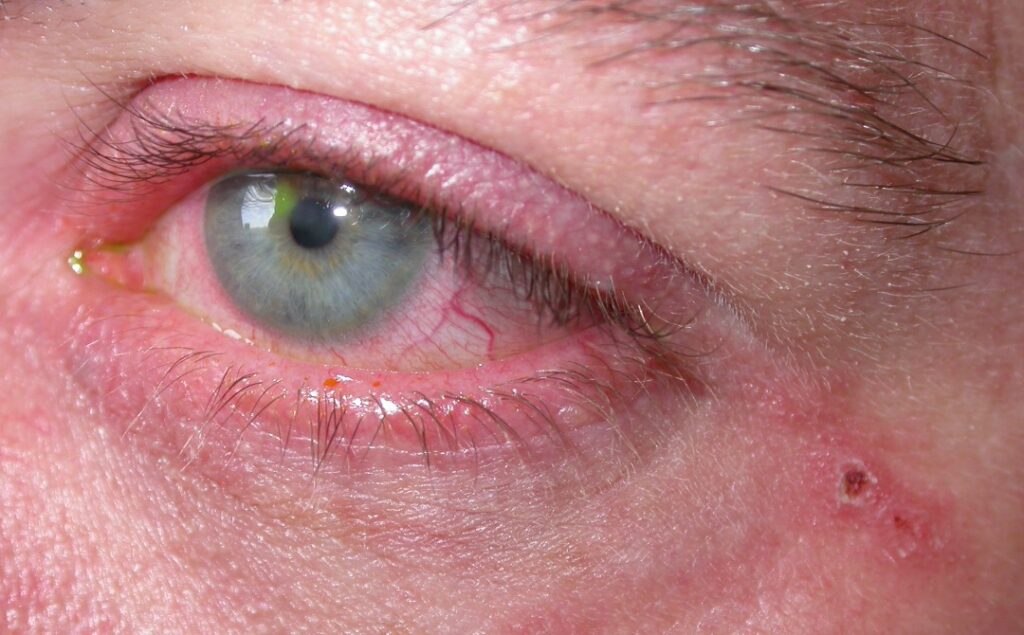The front surface of the eye is a clear window known as the cornea. It is 0.5mm thick in the centre and 1mm thick at the periphery. Behind the cornea sits the iris and pupil.
Infections of the cornea are known as corneal ulcers or ulcerative keratitis. They can be caused by viruses, bacteria or fungi.
The most common corneal ulcers are caused by a bacterial infection related to contact lens wear. It is estimated that 2 per 1000 contact lens wearers will have a corneal ulcer per year. Corneal ulcers are much more common in extended wear lenses, or associated with poor hygiene, over-wear of lenses, sleeping or swimming in lenses. Corneal ulcers can cause a permanent opaque scar in the cornea. This can cause permanent loss of vision if it is near the central cornea.
For this reason daily disposables are encouraged rather than extended wear lenses. We typically recommend wearing lenses for less than 12 hours per day and to have 1-2 days per week without lenses. You must never sleep or swim in lenses, and always remove them if the eye is red. Always have a back-up pair of glasses available to use if you do not have lenses.

Viral ulcer. Note scabbing herpes lesion adjacent to eye and yellow stained corneal ulcer above pupil (high mag below).

Viral (herpetic) corneal ulcer stained with a dye. Note finger like projections from central infection.
If you are a contact lens wearer and develop a photophobic painful red watering eye then see an eye specialist urgently. If ulcers are detected and treated urgently they rarely cause loss of vision. If the ulcer is allowed to develop without treatment you can become permanently blind. A GP or general casualty may not detect an ulcer. It is preferential to see your optometrist or an ophthalmologist. Most large hospitals have a dedicated eye casualty that you can attend the same day.

Central corneal opacity with inflamed eye. Contact lens associated ulcer.
